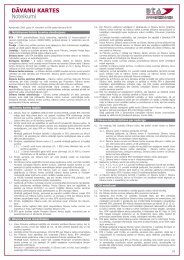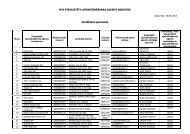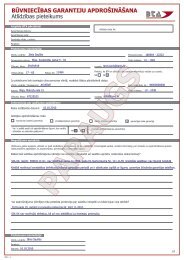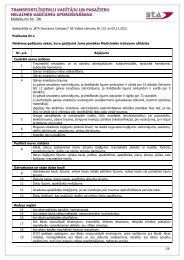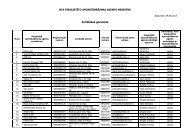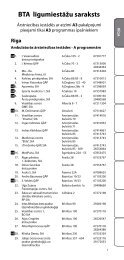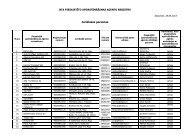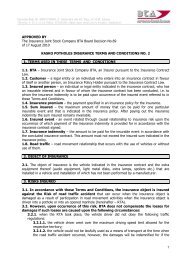BTA Insurance Joint Stock Company Public Quarterly Report 4 ...
BTA Insurance Joint Stock Company Public Quarterly Report 4 ...
BTA Insurance Joint Stock Company Public Quarterly Report 4 ...
Create successful ePaper yourself
Turn your PDF publications into a flip-book with our unique Google optimized e-Paper software.
Risks and Risk Management<br />
The business of insurance represents the transfer of risk from the insurance policy<br />
holder to the insurer and management of this risk. The largest insurance risks are<br />
formed by the insurer accepting the insured risk, assessing it, choosing the<br />
reinsurance coverage and fulfilling obligations as regards concluded insurance<br />
contracts. The Insurer is also exposed to the investment risk, when the <strong>Company</strong> has<br />
to cover technical reserves with assets invested in various financial instruments,<br />
which includes the market risk, credit risk, liquidity risk and operational risk.<br />
The Management of the <strong>Company</strong> has identified the risks and developed the<br />
management of these risks. Risk management is carried out in accordance with<br />
decisions of the <strong>Company</strong>’s Board.<br />
The Management of the <strong>Company</strong> has divided all risks into the following major<br />
groups:<br />
- <strong>Insurance</strong> risks;<br />
- Financial risks;<br />
- Operational risks.<br />
Each of these groups is divided into subgroups, which identify the risks that might<br />
affect any of the operating directions. Each risk has an action plan elaborated for it<br />
to be implemented to minimize and avoid the possibility of the risk occurring.<br />
<strong>Insurance</strong> Risks and Risk Management<br />
<strong>Insurance</strong> risk is the most significant risk faced by the <strong>Company</strong> in its daily activities.<br />
(a) Underwriting Strategy<br />
The <strong>Company</strong>’s underwriting strategy seeks diversity to ensure a balanced risk<br />
portfolio and is based on a large portfolio of similar risks held over a number of years<br />
and that changes the total risk effect.<br />
The underwriting strategy is included in the annual business plan, which describes<br />
the types of insurance, where the premiums are written, as well as branches and<br />
sectors in which the <strong>Company</strong> is prepared to undertake the risk. This strategy is<br />
adapted to individual risk underwriters using a detailed risk underwriting authority<br />
system that sets out the limits for individual risk underwriters by the type of<br />
insurance, business class and sector to develop a corresponding risk profile within<br />
the scope of the insurance portfolio. A non-life insurance contract may be concluded<br />
for a period of time up to five years; however, they are usually annual and the risk<br />
underwriters are entitled to refuse contract prolongation or renewal, or to change<br />
terms and conditions of the contract upon the prolongation (renewal).<br />
The calculation of insurance product tariffs and prices reflects current market<br />
situation and includes potential income necessary for the adjustment of future results<br />
in order to significantly hedge the financial risk.<br />
The Management of the <strong>Company</strong> monitors compliance with the underwriting<br />
authorities on a regular basis. The Management of the <strong>Company</strong> examines<br />
transactions that require particular approval.<br />
(b) Basic Product Features<br />
Terms and conditions of the insurance contracts that have significant effect on the<br />
amount, term and transparency of the future cash flow amounts from insurance<br />
contracts are described below. Evaluation of the basic products of the <strong>Company</strong> and<br />
the way risks are managed is also provided.<br />
7



